Review by Iman Qureshi
Banksy, an elusive artist from Bristol, UK, whose identity is unconfirmed, started becoming known in the late 90s to early 2000s as a street artist and political activist. His work is often created in order to convey some sort of political statement. He’s best known for his work ‘Balloon Girl.’ I was introduced to this artist for the first time when I was in junior high school, through an English teacher whom I admired very much. Ever since, Banksy became almost an icon to me, it was the first time I had heard of such a mysterious artist. So you can imagine my surprise and disappointment when I got an advertisement for Banksyland, coming to Edmonton, an exhibition for street art, but not the street art itself.
Banksyland is an immersive art exhibit that travels from city to city and was in Edmonton this November. It should be noted that Banksy himself has nothing to do with this event – his representatives have refused to take any royalties from this exhibit, which should be the first red flag. This means that the exhibit is put on by a completely separate company, called ‘One Thousand Ways.’ Though the event was initially supposed to take place in September, it was postponed to November on short notice, which was among the first of many disappointments. My friend and I only found out a few days before the date on my ticket, starting us off on the wrong foot.
The website for Banksyland claims to host this exhibit to help more people reach the guerrilla art that is meant for them to enjoy, but ultimately it just profits off of a non-capitalist artist. The point of the street art in the first place is to make it visible and accessible to everyone. This seemed to make the whole event feel like a cliché scam before ever walking in.
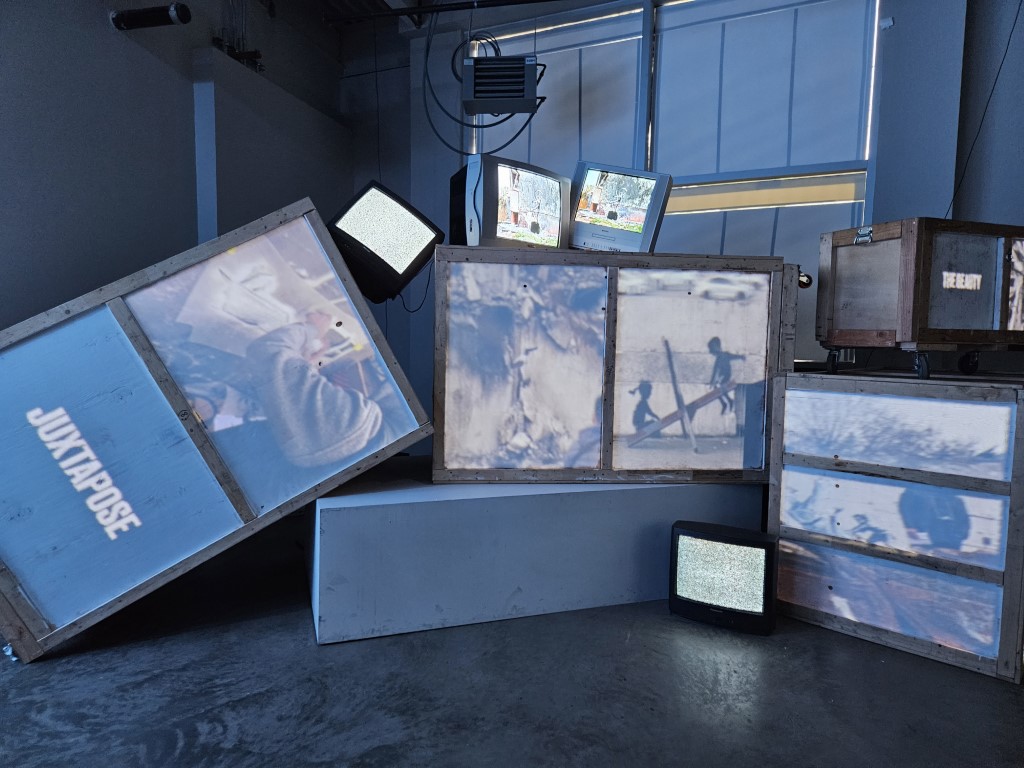
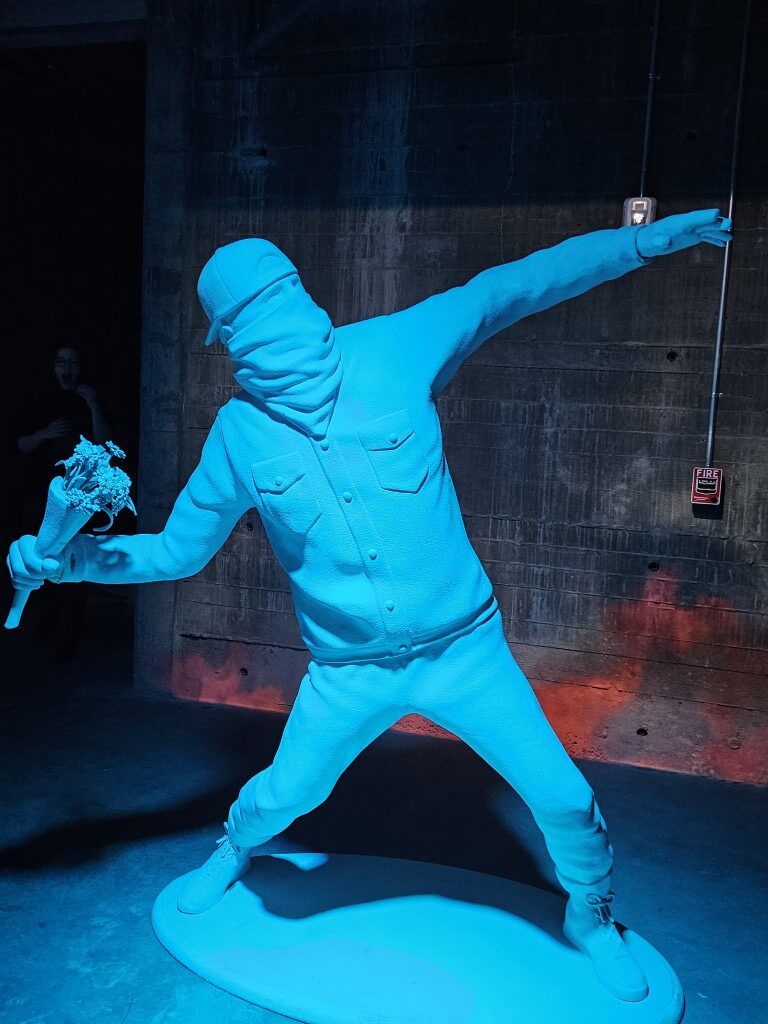
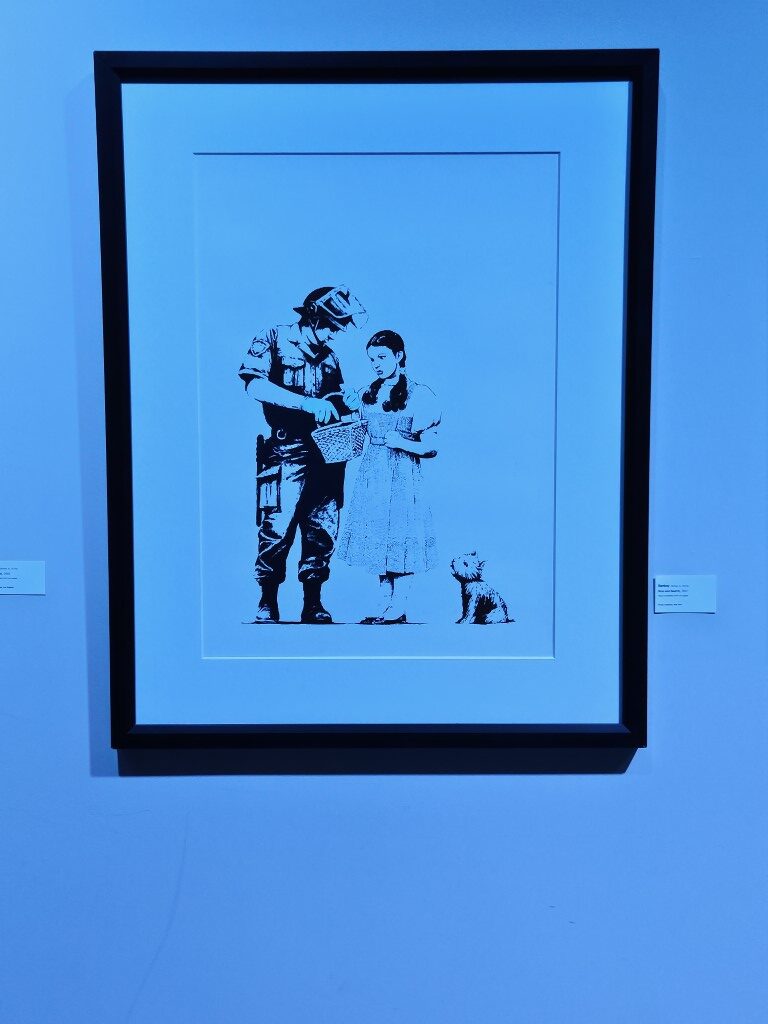
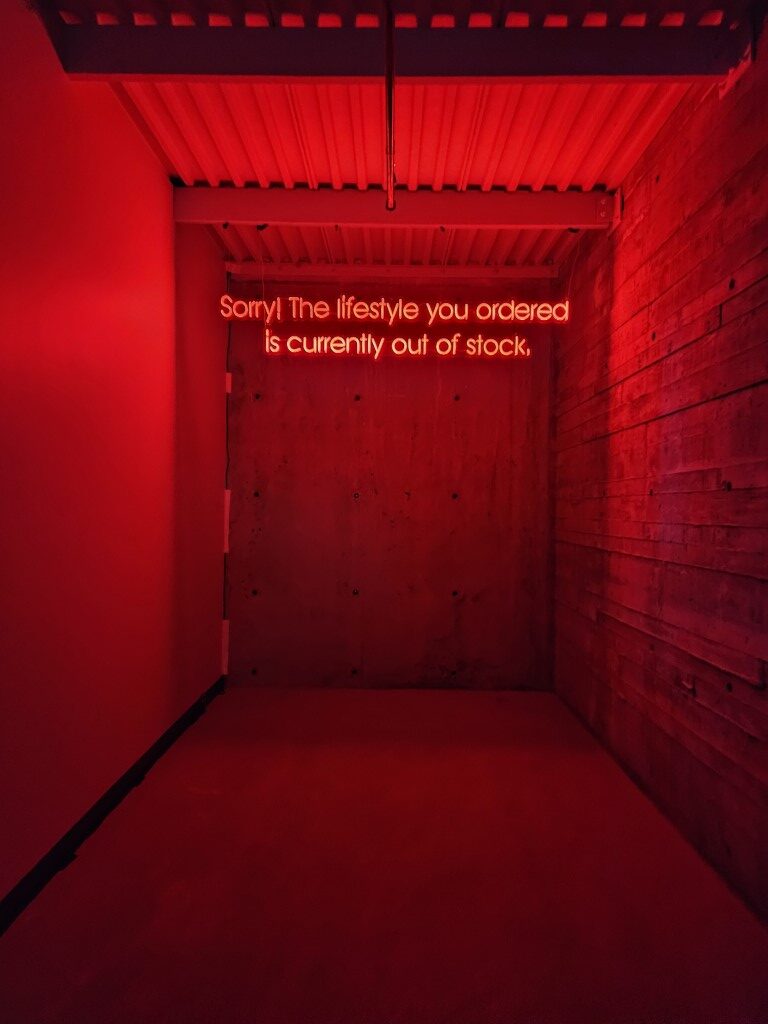
The event was set to be as mysterious, as the artist and the location was only revealed to ticket holders two weeks before the event. It took place in a fairly old looking, red brick venue located on Jasper Ave, called the Pendennis building. Ticket holders were meant to arrive prior to their time, and we had the freedom to take as long as we wanted, but it took a little over an hour to get through the full four floor exhibit.
Once inside, we were immediately greeted by overwhelming darkness, and it took our eyes a minute to adjust. We followed the crowd into the exhibit, where we were met with strobing blue lights and a large board displaying the timeline of Banksy’s life as an artist. And a huge, squishy crowd of people. We were immediately shoved up against the people in front of us, as more entered, making it difficult to navigate through the area. It felt like the event wasn’t as staggered as it looked from the outside, which was probably the downside of allowing guests to take as long as they wanted inside.
Inside, the gallery was set up in a sort of maze, where we just followed the art that ended up leading us through the floors, around the room, and eventually into an elevator. Outside, we had been promised stairs and an elevator by the event organizers, but once we got to the main floor we were met with a sign guiding us to the stairs, and upon turning into that hallway where they should have been, a bright pink sign said “the lifestyle you ordered is currently not available,” forcing us to use the elevator.
To our surprise, in the elevator, we were met by an elevator operator, who sat and pushed buttons, making the ride a little awkward every time. Especially because the operator would sigh any time someone got on, and there was a pressure to make conversation that no one really wanted, so instead everyone stood in uncomfortable silence.
The event itself was organized by theme or conflict, and each floor felt like it was dedicated to its own subject. The art itself included many mixed mediums, including physical paintings on material you might find around the street, and genuine street signs and cardboard. There was art being projected onto objects, sculptures, and a couple short films.
The theme of the pieces focused on geopolitical commentary and themes of revolt against injustices. Many included blurbs talking about the relevance and explaining the history behind it. This was unique because it felt like it invited you to learn more about the context instead of making you guess.
My favourite piece was a large white frame which looked like a still painting. It depicted a man on a horse, but he was draped with a red cloth over his head and upper body. The painting shows the man to have no control over the horse which stands on its back legs. [Ed.: The original wall painting is a take-off of David’s famous painting ‘Napoleon Crossing the Alps].
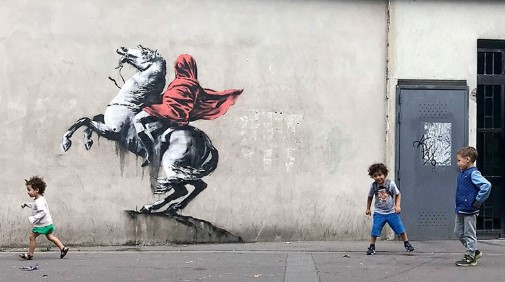
The original Banksy mural
photo Wayne Arthur Gallery
Watching this painting, I almost missed it. I had to stare just long enough to realize it wasn’t a painting at all. It was a projection of it, and a sped-up reel of people who walked in front of it. It was a recording of the original work. This, mixed with the actual people walking in front of it created a very strange, dismissive effect.
The downside to this was that the text wasn’t exactly large enough to be readable from a far distance, causing everyone to try and gather up around the small info boards to read whatever information they gave. The blurbs ended up being long, so this wasn’t ideal for slow readers, or anyone standing around those slow readers, trying to catch a peek at the posters.
We quickly realized that the event wasn’t very immersive at all. The only aspect that may have been considered immersive was that there was art everywhere, to the point of it being too much. At times, we didn’t know where to go, or where to look, especially with the huge crowd blocking most of the way. It would be best compared to an art gallery, but instead of being well lit enough to actually see the art, there were blue lights everywhere that make it felt like your sense of sight was diminishing.
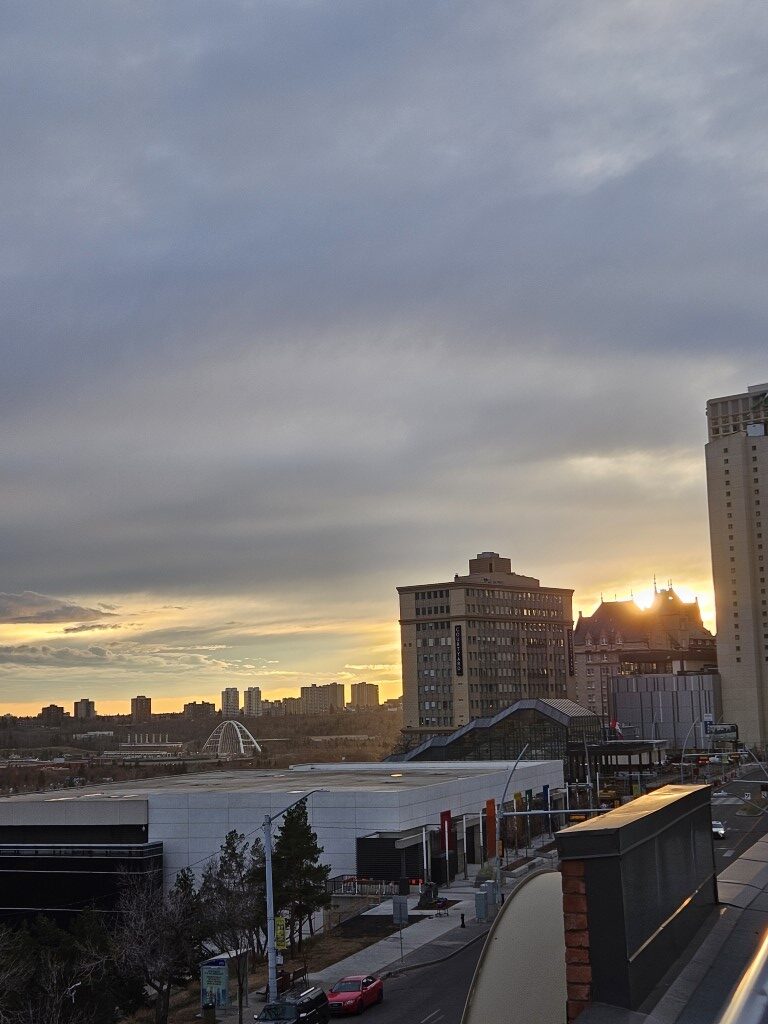
Once we finally made it up to the fourth floor, which was the smallest of them all, there was a door across the little hall, to the left of the elevator. It led out to a giant balcony, complete with tables and chairs, which doubled as a good excuse to get out of the hot and overcrowded building. It overlooked the entire city and we were just in time for the sunset.
It seemed that everyone else who finished the exhibit had the same idea as us, and the tables were all taken up. People lined the railings, but it wasn’t an unpleasant amount of people. We watched the sunset like treasure at the end of a scavenger hunt, it feeling more rewarding than the event itself.
After getting a breath of fresh air, we made our way back downstairs, where they sold Banksy merch that was mostly composed of skateboards and t-shirts. I found that the merch only further added to the irony of this whole thing, and to exclude even that bit may have allowed for a more humble end. This led us to the end of the exhibit, where we found the door, and left, feeling unfulfilled.
Though we were able to technically see Banksy’s work, both real and prints, we were left feeling dispirited. The art was there, and in a way it was a good collection of pieces. But it couldn’t have been a worse representation of the artist, Banksy himself, or his work. Work that was made to be free for the world to look at, to spread messages against capitalism, against violence, messages which advocated for peace, equality, and innocence.
It was all there, but in the most ironic sense, and we had fallen for the scheme by buying these tickets. We left with a shared tension of feeling like we needed to go through the gallery again to get our money’s worth. This seemed to follow us around for the rest of the evening, mockingly.
Banksyland 22-city tour
Edmonton, November 10-12
website


Recent Comments